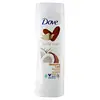What's inside
What's inside
 Key Ingredients
Key Ingredients

 Benefits
Benefits

 Concerns
Concerns

 Ingredients Side-by-side
Ingredients Side-by-side

Water
Skin ConditioningOctyldodecanol
EmollientCaprylic/Capric Triglyceride
MaskingGlyceryl Stearate Citrate
EmollientButyrospermum Parkii Butter
Skin ConditioningGlycerin
HumectantCetyl Alcohol
EmollientCanola Oil
EmollientOlea Europaea Fruit Oil
MaskingXanthan Gum
EmulsifyingHydroxyacetophenone
AntioxidantSodium Benzoate
MaskingCarbomer
Emulsion StabilisingParfum
MaskingCitral
PerfumingLimonene
PerfumingSodium Hydroxide
BufferingWater
Skin ConditioningGlycerin
HumectantDimethiconol
EmollientStearic Acid
CleansingCaprylic/Capric Triglyceride
MaskingGlycol Stearate
EmollientPEG-100 Stearate
Petrolatum
EmollientGlyceryl Stearate
EmollientCaprylyl Glycol
EmollientPhenoxyethanol
PreservativeCetyl Alcohol
EmollientParfum
MaskingAcrylates/C10-30 Alkyl Acrylate Crosspolymer
Emulsion StabilisingTriethanolamine
BufferingDisodium EDTA
Stearamide Amp
Carbomer
Emulsion StabilisingCocos Nucifera Oil
MaskingTocopheryl Acetate
AntioxidantPrunus Amygdalus Dulcis Seed Extract
Skin ConditioningHelianthus Annuus Seed Oil
EmollientPEG-40 Hydrogenated Castor Oil
EmulsifyingSine Adipe Lac
Skin ConditioningIsomerized Linoleic Acid
Skin ConditioningPrunus Amygdalus Dulcis Oil
Skin ConditioningCitric Acid
BufferingCoumarin
PerfumingCI 77891
Cosmetic ColorantWater, Glycerin, Dimethiconol, Stearic Acid, Caprylic/Capric Triglyceride, Glycol Stearate, PEG-100 Stearate, Petrolatum, Glyceryl Stearate, Caprylyl Glycol, Phenoxyethanol, Cetyl Alcohol, Parfum, Acrylates/C10-30 Alkyl Acrylate Crosspolymer, Triethanolamine, Disodium EDTA, Stearamide Amp, Carbomer, Cocos Nucifera Oil, Tocopheryl Acetate, Prunus Amygdalus Dulcis Seed Extract, Helianthus Annuus Seed Oil, PEG-40 Hydrogenated Castor Oil, Sine Adipe Lac, Isomerized Linoleic Acid, Prunus Amygdalus Dulcis Oil, Citric Acid, Coumarin, CI 77891
Ingredients Explained
These ingredients are found in both products.
Ingredients higher up in an ingredient list are typically present in a larger amount.
This ingredient is an emollient, solvent, and texture enhancer. It is considered a skin-softener by helping the skin prevent moisture loss.
It helps thicken a product's formula and makes it easier to spread by dissolving clumping compounds.
Caprylic Triglyceride is made by combining glycerin with coconut oil, forming a clear liquid.
While there is an assumption Caprylic Triglyceride can clog pores due to it being derived from coconut oil, there is no research supporting this.
Learn more about Caprylic/Capric TriglycerideCarbomer is a polymer of acrylic acid. Its main role is to create a gel consistency.
A high amount of carbomer can cause pilling or balling up of products. Don't worry, most products contain 1% or less of carbomer.
Cetyl Alcohol is a fatty alcohol. Fatty Alcohols are most often used as an emollient or to thicken a product.
Its main roles are:
Though it has "alcohol" in the name, it is not related to denatured alcohol or ethyl alcohol.
The FDA allows products labeled "alcohol-free" to have fatty alcohols.
Learn more about Cetyl AlcoholGlycerin is already naturally found in your skin. It helps moisturize and protect your skin.
A study from 2016 found glycerin to be more effective as a humectant than AHAs and hyaluronic acid.
As a humectant, it helps the skin stay hydrated by pulling moisture to your skin. The low molecular weight of glycerin allows it to pull moisture into the deeper layers of your skin.
Hydrated skin improves your skin barrier; Your skin barrier helps protect against irritants and bacteria.
Glycerin has also been found to have antimicrobial and antiviral properties. Due to these properties, glycerin is often used in wound and burn treatments.
In cosmetics, glycerin is usually derived from plants such as soybean or palm. However, it can also be sourced from animals, such as tallow or animal fat.
This ingredient is organic, colorless, odorless, and non-toxic.
Glycerin is the name for this ingredient in American English. British English uses Glycerol/Glycerine.
Learn more about GlycerinParfum is a catch-all term for an ingredient or more that is used to give a scent to products.
Also called "fragrance", this ingredient can be a blend of hundreds of chemicals or plant oils. This means every product with "fragrance" or "parfum" in the ingredients list is a different mixture.
For instance, Habanolide is a proprietary trade name for a specific aroma chemical. When used as a fragrance ingredient in cosmetics, most aroma chemicals fall under the broad labeling category of “FRAGRANCE” or “PARFUM” according to EU and US regulations.
The term 'parfum' or 'fragrance' is not regulated in many countries. In many cases, it is up to the brand to define this term.
For instance, many brands choose to label themselves as "fragrance-free" because they are not using synthetic fragrances. However, their products may still contain ingredients such as essential oils that are considered a fragrance by INCI standards.
One example is Calendula flower extract. Calendula is an essential oil that still imparts a scent or 'fragrance'.
Depending on the blend, the ingredients in the mixture can cause allergies and sensitivities on the skin. Some ingredients that are known EU allergens include linalool and citronellol.
Parfum can also be used to mask or cover an unpleasant scent.
The bottom line is: not all fragrances/parfum/ingredients are created equally. If you are worried about fragrances, we recommend taking a closer look at an ingredient. And of course, we always recommend speaking with a professional.
Learn more about ParfumWater. It's the most common cosmetic ingredient of all. You'll usually see it at the top of ingredient lists, meaning that it makes up the largest part of the product.
So why is it so popular? Water most often acts as a solvent - this means that it helps dissolve other ingredients into the formulation.
You'll also recognize water as that liquid we all need to stay alive. If you see this, drink a glass of water. Stay hydrated!
Learn more about Water